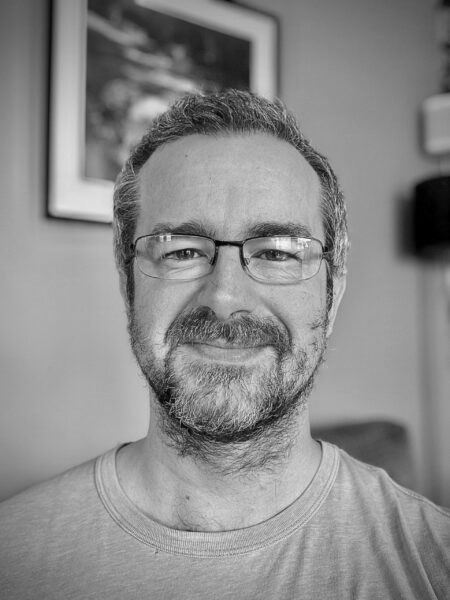
In this extra post, Dr Shaun Phillips and Dr Len Parker Simpson share their innovative assessment technique to encourage analytical thinking and evidence-based reasoning in the BSc Applied Sport Science programme: the “Pitch Conversation”. They explain how the assessment works in the classroom and how it links with the University’s Skills for Success Framework. Shaun is Senior Lecturer and Len is a Teaching Fellow Sport and Exercise Physiology at the Institute for Sport, PE, and Health Sciences, Moray House School of Education and Sport.
Introducing the “Pitch Conversation”
A persistent challenge in designing undergraduate assessments is balancing rigour with relevance. Often, assessments either feel disconnected from the realities of professional life or fail to properly evaluate a student’s capacity for analytical thinking and evidence-based reasoning. In Environmental Physiology 4 (a Year 4 option course on the BSc Applied Sport Science programme), we set out to create an assessment that addressed both capacities, demanding serious academic preparation whilst also reflecting situations graduates will face in Applied Sport Science roles. The result was the “Pitch Conversation”—a face-to-face discussion where students must justify and defend their proposed use of an environmental chamber for a specific athletic scenario.
The assessment wasn’t designed as a presentation or a one-way performance. Instead, students led a real-time, evidence-based conversation with a member of staff playing the role of the Head of Sport Science for the selected athletic scenario. Students had to justify to this senior colleague why accessing an expensive, time-and resource-intensive facility would be beneficial for the athlete/team. It’s the kind of conversation that’s both common and consequential in many professional worlds, and often overlooked in formal academic assessment.
Key aims and underlying principles
The core intention behind the assessment was to develop and evaluate a cluster of skills:
- the ability to articulate a clear idea;
- to ground that idea in relevant evidence;
- to understand that real-world practice rarely follows a neat path;
- to defend decisions in a live, unscripted setting.
We were not looking for students to recite protocols or list references from memory; we wanted to see whether they could explain why they had chosen a particular approach, and whether they could do so in terms that were persuasive, coherent, and contextually grounded.
To support this, students were given freedom to select their athlete and environmental scenario. This was important—not only did it mirror the open-ended nature of real-world problem-solving, but it also allowed students to work from areas of genuine interest or familiarity. We also deliberately left the format of their supporting materials open. Some used slides, others infographics, handouts, videos, or data visualisations. What mattered was the clarity and credibility of the argument.
Finally, the requirement that the conversation be held in person—and that it be led by the student—was crucial. This shifted the dynamic from a typical Q&A to something more dialogic and exploratory. It also brought a level of unpredictability and pressure that is often absent in traditional assessments but is entirely typical of real professional settings.
Observations on student engagement and performance
One of the more encouraging things was the way students engaged with the task. Most approached it seriously and with a sense of ownership that we don’t always see in more ‘traditional’ assessments. The freedom to shape their own scenario and the need to prepare for a real conversation appeared to increase investment in the process. Several told us, either informally or in written feedback, that they found the task genuinely motivating. They liked that they could “make it their own” and that they were being asked to use their knowledge in a practical, consequential way.
That said, the open-endedness was not without challenges. Some students initially struggled with the level of choice and the lack of a defined prescription. A few were anxious about the face-to-face component, particularly given the expectation that they take the lead. But in nearly all cases, this anxiety diminished with preparation. Those who invested in rehearsing the core of their arguments—especially with peers—tended to perform most confidently during the conversation itself. What also became clear during the assessment process was that this format revealed far more about a student’s understanding than a written report would have. In conversation, it’s harder to hide behind jargon, generalisations, or superficial reference to literature. When students were unsure of a decision, or couldn’t explain their rationale, that became evident quickly, but so did genuine insight and thoughtful decision-making.
Alignment with Skills for Success Framework
From a curriculum perspective, the assessment mapped well to the University’s Skills for Success framework (previously, the Graduate Attributes) in the following ways:
- Requiring students to employ critical thinking (independent thought through questioning norms, practices and opinions; seeking relevant/appropriate evidence; determining the significance of what is being expressed) to solve the problem of applying theory to practice (imagining alternative ways of addressing problems; synthesising information and translating into different contexts; facilitating solutions), which also required demonstration of adaptivity (flexibility to changing circumstances; addressing uncertainty/ambiguity).
- Encouraging students to apply their own curiosity and individuality to the development of the assessment.
- Requiring, and embedding, communication (active listening, ability to convey effective meaning and message, public speaking, advocacy and influencing) and reflection (reviewing during the activity; considering choices, decisions, and their outcomes).
Importantly, the assessment asked them to bring all these skills together in one coherent task—not in isolation, but as they would be used in practice. The assessment also highlighted something we’ve long suspected: students are capable of more sophisticated thinking than we sometimes allow for in assessment design. Given the right conditions—real autonomy, clear expectations, and an authentic task—they can rise to the challenge.
Final reflections
As tutors, this assessment tells us what we want to know: whether the student can think critically, apply evidence meaningfully, and communicate effectively under pressure. In that sense, it feels like time well spent—for them, and for us. If we say we want to produce graduates who are ready for the real world, then we must start assessing them like they already live in it.
What the assessment also made clear—for staff as much as students—is that many of our learners are still under-prepared for the kinds of knowledge application their future roles will demand. They can recite content, and they may understand theory well, but the shift to independently applying that knowledge in an uncertain or dynamic setting remains a challenge. We also saw a general lack of confidence in students when it came to asserting their own ideas, taking initiative, and owning their decisions. This wasn’t surprising, but it was stark. This task functioned as a diagnostic for where the real development work still needs to happen—not just in their knowledge base, but in their professional readiness and self-belief. However, semester 2 of 4th year may be too late.
 Shaun Phillips
Shaun Phillips
Shaun Phillips is Senior Lecturer in Sport and Exercise Physiology in the Institute for Sport, PE, and Health Sciences, where he teaches research and statistics, and physiology in multiple contexts. He is interested in innovative teaching and learning approaches, and in bridging the gap between theory and application.
 Len Parker Simpson
Len Parker Simpson
Len Parker Simpson is a Teaching Fellow in Sports Physiology and has extensive applied experience in elite sport.



Really interesting post; I very much like the approach. Two questions:
(1) How long did each pitch session take? I’m wondering how practical it would be to scale to a course of 200+…
(2) Were there any Learning Adjustments that applied, and how did you deal with them?
Hi David – thanks for the comment. Each pitch conversation lasted 15 minutes. We had 32 students on the course last year, and four pitch conversation sessions running concurrently. I would say that anything less than 15 minutes would not give sufficient time. We haven’t had any learning adjustments, and we do make the nature of the assessments very clear prior to students selecting their option courses so that they can decide whether this type of assessment is for them. Due to the strong relevance of the assessment to many of the skills required in a host of careers, we are quite resistant to accommodating alternative assessment methods without a very strong rationale.